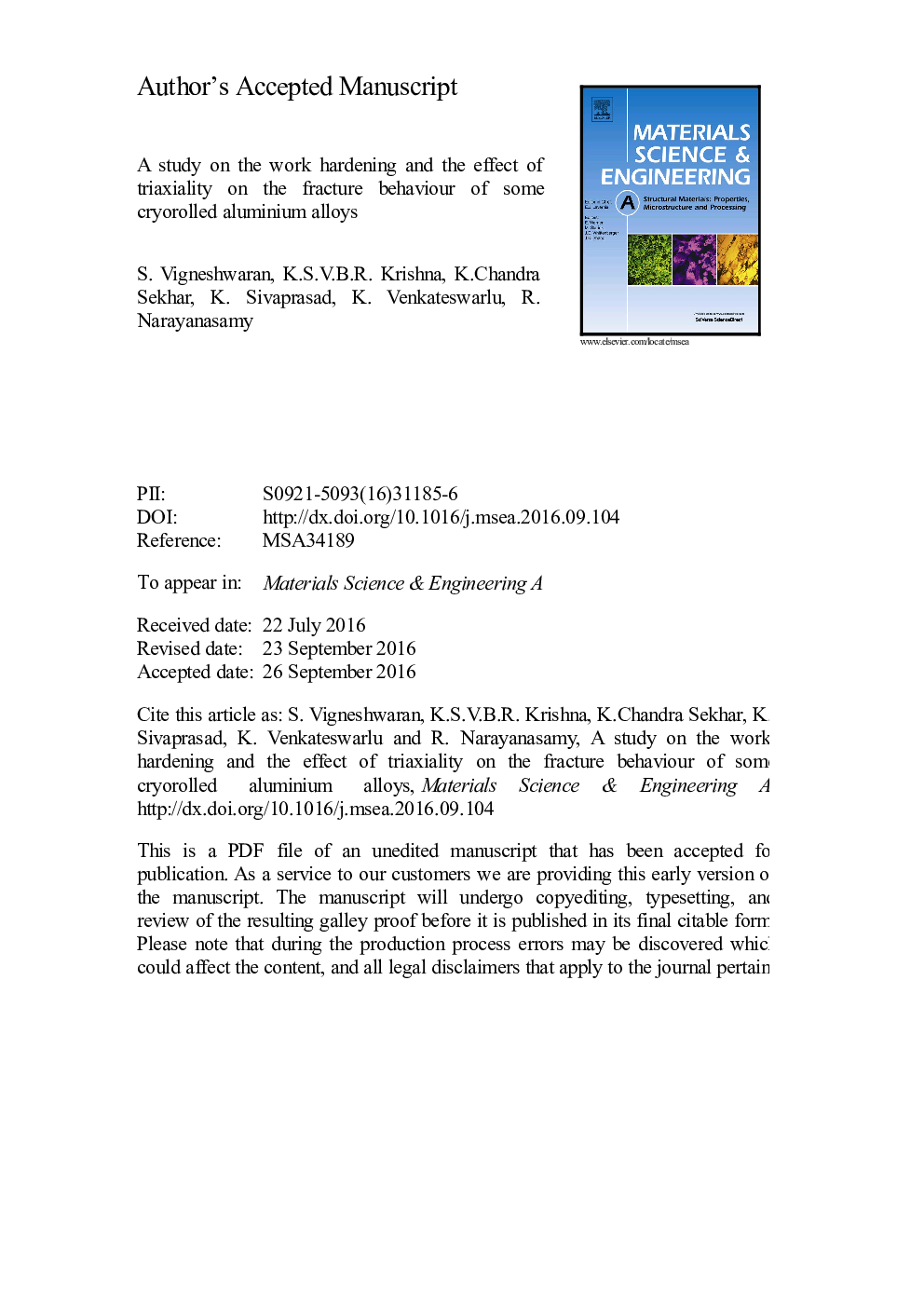| Article ID | Journal | Published Year | Pages | File Type |
|---|---|---|---|---|
| 5456550 | Materials Science and Engineering: A | 2016 | 46 Pages |
Abstract
The influence of cryorolling on the tensile properties, fracture behaviour (void coalescence) and its limit with respect to strain traixaility (εm/εeff) was investigated on a commercial pure Al (CP-Al), an Al-Mg alloy (AA5083) and an Al-Mg-Si alloy (AA6061). The above sheets were rolled at both room temperature and liquid nitrogen temperatures up to 50% and 75% rolling reductions. The rolled sheets were formed on a double action hydraulic press up to fracture and the fracture strains were measured and correlated with respect to strain triaxiality. The work hardening behaviour and the relative slip distance were also evaluated for the three alloys in all conditions. The work hardening rate was high for AA 5083 due to the effect of solute drag mechanism, which resulted better strain hardening along with strain hardening due to rolling. The void coalescence analysis on fractured samples supported the enhanced fracture resistance tendency of AA5083, based on void size and other void coalescence parameters. However, the AA 6061 and CP-Al showed inferior response to fracture resistance, but AA 6061 was better in fracture resistance compared to CP-Al. In accordance with void coalescence analysis, the AA 5083 showed better fracture limit with respect to strain triaxiality compared to AA 6061 and CP-Al.
Related Topics
Physical Sciences and Engineering
Materials Science
Materials Science (General)
Authors
S. Vigneshwaran, K.S.V.B.R. Krishna, K.Chandra Sekhar, K. Sivaprasad, K. Venkateswarlu, R. Narayanasamy,
